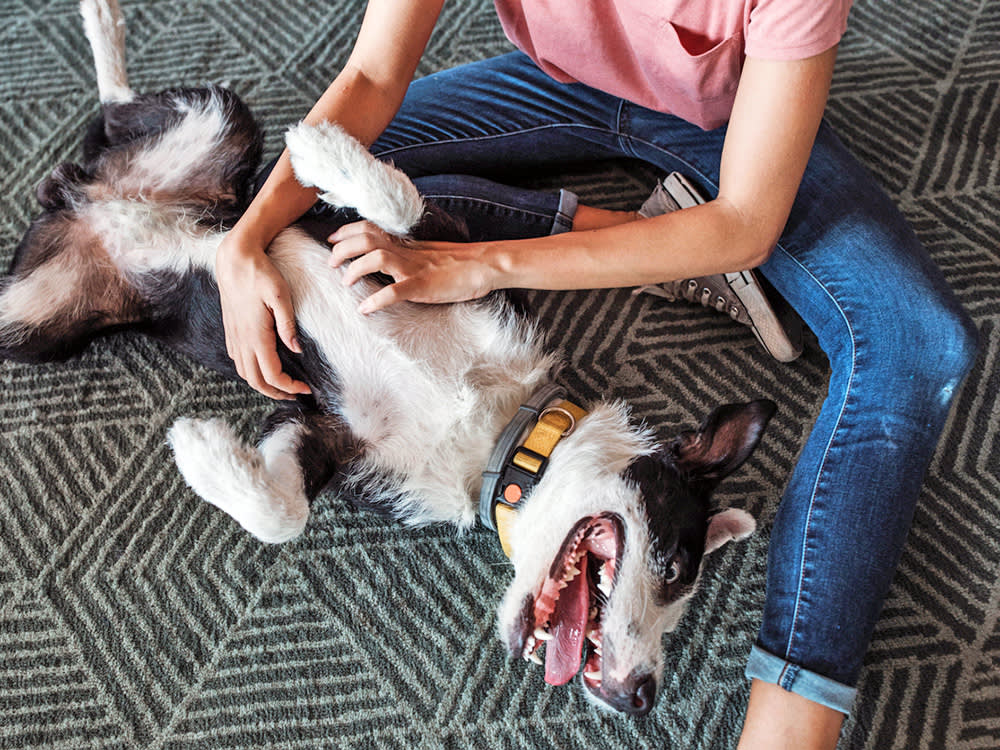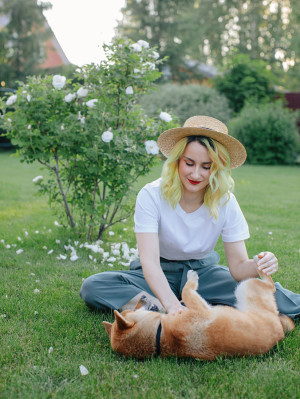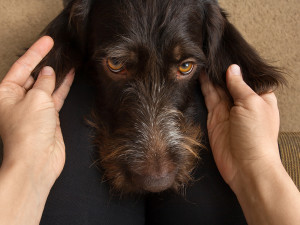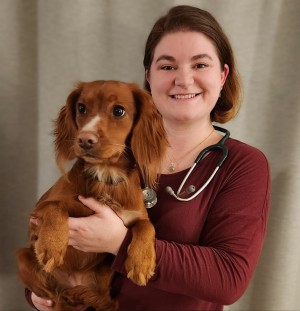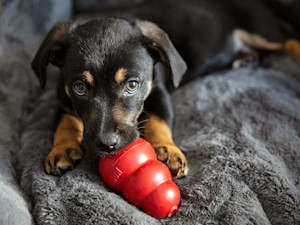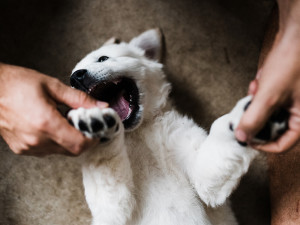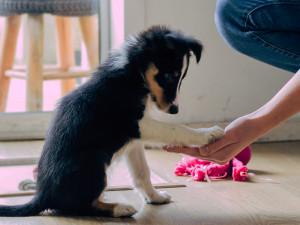Wait... Do Dogs Have Belly-Buttons?
Of course they don’t, do they?
Innies and outies, we all have belly-buttons and they come in a variety of shapes and sizes. But do dogs have belly-buttons like humans do?
Yes! Dogs have belly-buttons – but there’s more to learn. Read on to find out the differences with dog versus human belly-buttons, how they are formed and how to keep them lint free and squeaky clean.
What is a belly-button?
So, what is a belly-button? The belly-button or umbilicus is the leftover result of the umbilical cord that is only in use during foetal development. The umbilical cord is present in all developing mammals that use a placenta, which includes humans, dogs, cats and everything from mice to elephants.
Interestingly, not all animals have a belly-button as some don’t form a placenta during foetal development. These include mammals such as monotremes (egg-laying mammals) like platypuses and echidnas, and marsupials like the kangaroos and koalas.
Do dogs have belly-buttons?
Yes, dogs have belly-buttons. However, they are sometimes difficult to see as they are less noticeable than human belly-buttons. Not only does their fur make the belly-button harder to find, but the anatomy of the scar left behind is different to humans.
The umbilical cord is what connects the foetus to the mother via the placenta, which allows the exchange of nutrients, oxygen and waste products such as carbon dioxide. Once born and the umbilical cord is cut or breaks, the remaining cord is no longer needed as the lungs start doing the job of oxygen and carbon dioxide exchange and the digestive and metabolic system processes nutrients. This causes the remaining cord to shrink, dry up and fall away as blood supply is cut off until all that remains is a scar.
Where is a dog’s belly-button located?
The belly-button on a dog is located in a similar position to ours. If you want to find where your pup’s belly-button is, have a look at the soft part of the abdomen, under the ribcage in the centre. It can feel smooth and almost like a small dimple or bump. Next time you get begged for yet another belly rub, take some time to feel along the centre of the tummy and part the fur in the middle to see if you can locate the navel.
What does a dog’s belly-button look like?
The belly-button on a dog does not look like ours. Whereas ours are usually more inverted, our dogs’ navels are usually more flat. They are round or linear, and sometimes appear paler than the connecting skin and look more scar-like. They are usually smooth and although surrounded by fur, the navel itself is usually fur free.
Can a dog’s belly-button get infected?
Yes belly-buttons on dogs can get infected, especially when they are very young when it hasn’t fully formed into a scar. As the belly-button was used as a transport portal while attached to the umbilical cord, this pathway still has the potential to transport bacteria and infection into the body. This can be a risk for newborn puppies and umbilical care is important when caring for newborns to limit the risk of infection. ‘Omphalitis’ or navel infection can be dangerous as the internal part of the umbilicus can transport the infection through the rest of the body causing systemic infection and illness in young animals.
Signs of infection include:
swelling of the umbilicus
heat or discharge from the area
lethargy
high temperature
Another health risk that occurs at the navel are umbilical hernias. These are when the small hole in the abdomen for the umbilical cord doesn’t close and it can allow abdominal content to push through the hole.
Umbilical hernias can range from very small holes that can be felt as a dimple or can look like an outie belly-button, to large holes that can allow part of the gut to get through which then bulge under the skin as a large mass. This can be very dangerous and so a hernia check is one important aspect of the physical exam your pup gets at their first vet visit. If you notice any signs of infection or protrusion of the navel, contact your vet for advice.
How to care for a dog’s belly-button
When our pups are newborns it is important that the umbilicus is checked daily to make sure no sign of infection is developing. Once the scar tissue has healed, maintenance reduces to that of normal skincare once they’re older.
It is not unusual to find umbilical hernias on pups but to find out how best to care for your own individual pup it is best to get them seen by a vet. Usually, any hernia will be small and will sometimes even close up on their own. Some may have a small bit of abdominal fat poking through causing a small soft bump. This may need treatment or abdominal massage to help reduce it as the abdominal wall below closes and heals. Your vet will be able to tell you if your pup is at risk of the hernia worsening or in need of additional treatment or surgical correction.
Belly-buttons are another thing our canine companions share with us humans. They may look slightly different and require little to no care once older. Due to their belly-buttons being flatter, dogs don’t even have to worry about it collecting lint! If you notice any colour change, protrusions or signs of infection get in touch with your vet for a physical exam of your pup to make sure all is well. Remember to inspect the area every so often to check, which is a good opportunity for an additional tummy rub for your four-legged friend...
